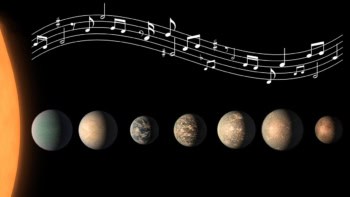Increasing numbers of writers and artists are becoming interested in science

Art is meeting science all around us. Every month brings word of some new exhibition, competition, collaboration or example of art and science interacting. These can range from the modest – such as the appearance of a scientist in a minor subplot in a novel – to major initiatives such as the Signatures of the Invisible exhibition or the play Copenhagen.
The interactions go both ways – many university science departments have writers and artists in residence, for example, while the Institute of Contemporary Arts in London has a scientist in residence. But how meaningful are these collaborations? Can scientists gain anything from their interactions with art and artists? Do artists and writers do anything more than use science as raw material? And does it matter?
The many faces of art and science
This special issue of Physics World explores some of these issues. The focus on the science side is, naturally, on physics and cosmology. Art is interpreted in its broadest sense to cover the visual arts, the written word and various types of performance. The emphasis, for the most part, is on fairly recent interactions for reasons of practicality rather than prejudice – there are simply not enough pages available to do justice to a topic that is as old as the subjects of art and science themselves.
Unfortunately it is impossible to be exhaustive even within this shorter timeframe. The journal Interdisciplinary Science Reviews recently devoted almost 90 pages to the subject of science and theatre alone, so there are sure to be gaps in the coverage that follows. Poetry is an obvious omission from the topics covered, as are music and cinema. The use of science to examine classic paintings – the subject of the Art in the Making exhibition that is currently running at the National Gallery in London – is also excluded, as is science fiction. And if you want to read about the “two cultures” debate, look elsewhere.
In “Did Picasso know about Einstein?” Ciara Muldoon writes about what may have been the greatest art-science interaction of all time. Einstein published his special theory of relativity – which completely overhauled our ideas about space and time – in 1905. Around the same time Picasso was developing cubism, a completely new direction in art. Are the two events somehow connected?
We also look at the increasing number of plays and modern novels that are about science or scientists. Most of the works discussed are examples of artists borrowing from science – “raiding it for metaphors” as the novelist Ian McEwan has said – but there is also evidence of an increasing trend to view books by scientists as “literature”.
Many of the more formal collaborations between science and art have taken place in the field of visual art, and in “A brief history of art and science” we examine how physicists and artists have worked together.
Within physics, advances in technology have allowed researchers to present their results with ever-increasing visual impact. We have selected three of these images – the Eagle Nebula, entangled photons and the quantum mirage – as “Iconic images” and describe how they were created. What all three images have in common – in addition to their visual impact and the novel physics they reveal – is that they are composites of two or more sets of data.
Something for everyone
Given the growing number of interactions between artists and scientists, is it realistic for us to expect the arts to have any impact on science beyond providing epigraphs for books or words like “quark”? Michael Frayn’s play Copenhagen has had a major impact on the history of physics, but we could find no examples of art or literature having a direct influence on other areas of research in physics.
There are, however, similarities between the arts and science – the need for inspiration, creativity and hard work, the willingness to experiment and be brave, and the conviction that you are searching for or creating work that says something meaningful about the world or nature. Robert Crease explores some of these ideas in “More than pretty pictures” (see Physics World November 2002 p19, print version only). In purely practical terms, thinking about something other than physics can be good for a physicist. One eminent researcher told us: “I have had some of my best ideas in concerts.”
There are also, of course, major differences between science and the arts. No one but Shakespeare could have written the sonnets, the story goes, but someone would have developed relativity even if Einstein had not. But we should celebrate these differences rather than bemoaning them. If the interactions between art and science can benefit either side – either in the giving or receiving, in science supplying the raw material for art, or in books and plays bringing science to a new audience – then that is enough.



